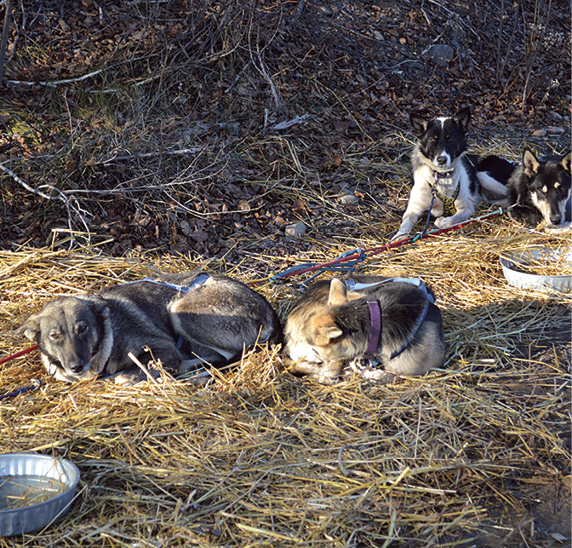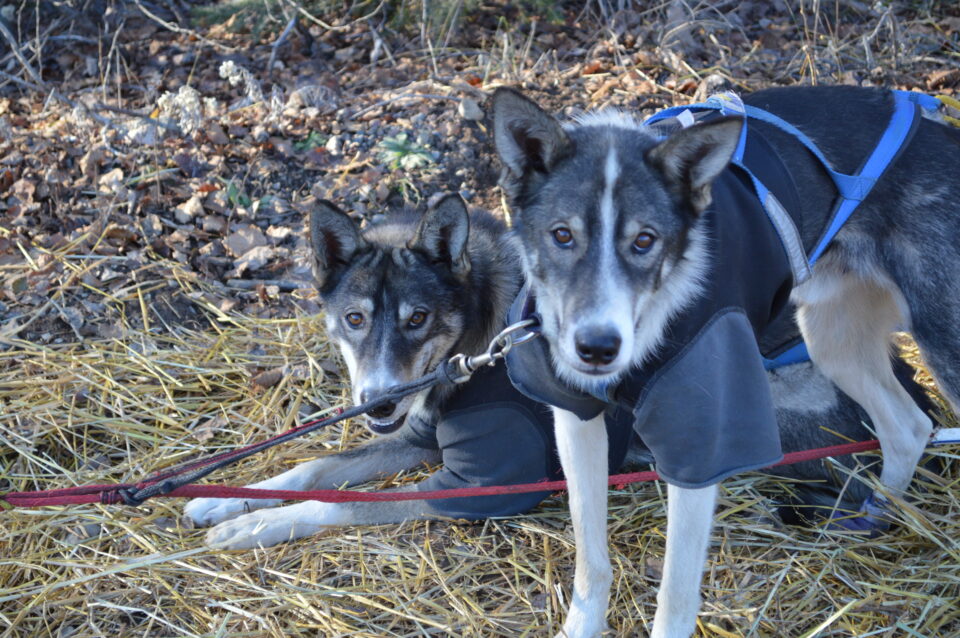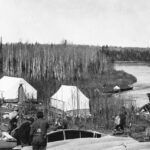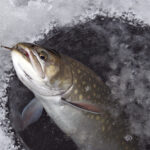In early December, I made a 24-hour trip to Anchorage for the Iditarod rookie meeting. I and 16 other aspiring Iditarod mushers attended a one-day crash course in all things Iditarod, which included pro-tips from experienced mushers such as Aaron Burmeister and the Berington sisters, veterinary lectures, slideshows on how the trail is put in by the snowmobile crew, how the Iditarod air force operates, and information about sled dog nutrition over the course of a long-distance race. This was a lot to take in. I wrote down notes—everything from “Don’t purge your sled at White Mountain!” and “Don’t wait for anybody!” to “Don’t get left behind.”
The Iditarod musher field is now up to 42 mushers, up from 33 mushers last year, 49 in 2022, and 46 in 2021. Previous to these years the numbers were in the 50s, 60s and higher, and the rookie numbers were usually 20 percent of the field or less. This year, we rookies make up 40 percent of the field, which means that the Iditarod organization wants to make sure that they are passing along all the information possible to the newbies to help us succeed. In any given year there can be challenges that might make the race inordinately more difficult, causing a high number of “scratches”—the term for when a team drops out of the race. When this happens in Iditarod, the team—musher, sled, and dogs—must be flown out of whatever checkpoint they drop out at, to Anchorage. In 2020, 24 out of 57 mushers scratched for various reasons, like deep heavy wet snow on the Yukon River and overflow on the coast, among other problems. Some years the conditions are better than others.

The single biggest difference between the Iditarod and every other race we do (length and terrain notwithstanding) is that Iditarod is completely unassisted. People keep asking me if Matt will be posting videos of the team coming through the checkpoints or if he’ll be there to watch the dogs while I take a nap or help me feed them or all of those things, and I am telling you that it will only be me—just me—doing all the things for 16 dogs. There will be volunteers to help me park the team. Then, I take off their booties, put down straw, put coats on if they are not yet in a coat, feed them a meal and fire up the cooker to thaw meat for their next meal. All of this takes a good hour. Meanwhile, I chug some liquids, throw my own meal in the cooker to heat up, and then once everyone is resting, perhaps head inside for a quick nap. After an hour, I come back out, feed the dogs again, bootie them up, pack up the sled, and we head back out on the trail. After a few checkpoints, rookie musher Anna Hennessy and I will look at each other with very sleep deprived eyes, eagerly awaiting our 24-hour layover when we can get a solid stretch of sleep.
So how am I preparing? I try to fit in some weight lifting each week. This has been temporarily on hold after I injured my forearm one afternoon when I was out with the team near the end of a 35-mile run on the ATV and we found a large tree down across the road. I went up to cut it with the chainsaw, but I couldn’t get that chainsaw to start. Now this was one of the few colder days we’ve had this fall, temps hovering around 10 degrees, so I had gotten quite chilled over four hours on the ATV. Earlier that morning, we had discovered my daughter’s hamster had died a rather tragic death, and the week before, our beloved sled dog turned house dog of 14 years, Yeller, had died. Well, I turned all this grief and frankly hysteria into cranking on that chainsaw and I just couldn’t get it to turn over, and lest you think I am some frail thing who doesn’t know how to start a chainsaw, I’m telling you you’re wrong. I’ve cut down many trees with many saws and it’s usually not a problem, only when I have 14 dogs screaming at me to go, apparently. So, I gave up, put the saw away, and swung the team around and went home a different way, which had its own problems because I almost had a giant dog pile up and fight but finally, I got it all sorted out and we went on our way. Unfortunately, my forearm swelled up and hasn’t been the same for over a week since that incident, but I’m sure it will be fine.
Just over a week after this, we were doing a back-to-back run with one of the teams. Matt ran the first half and had the team resting on straw. I met them, took over, and rested the team for two hours. We started back out at dusk, ran 10 or so miles and the ATV killed. We were on a downhill slope heading back toward the main road we travel, so I put it in neutral and kept going. At this point I had no cell coverage, so I pulled out the Inreach, our satellite messenger, and wrote Matt that the ATV died; bring a vehicle. The dogs were still pulling well in neutral and Trout Lake Road would mostly be trending downhill toward the Kadunce River so we kept on, but occasionally we hit a hill and the dogs came to a stop. I told Matt we were stuck and I got out and snacked the dogs, who were acting oddly calm about the whole situation.
“Get out and push,” Matt messaged. After a snack and a break, the dogs gathered up their gusto and I gave a push and we crested the hill and kept on. We went on like this all the way to County Road 14. Matt did show up with a car, and told me we were doing great. I said we’d need the car at the driveway (a long uphill) and he said we’d push the ATV up, which we did—it was hard work. And the UPS truck came just in time to see us finish our effort and the dog team strung out in the yard, and probably wondered just what exactly these crazy folks were up to mushing across their front lawn in December.

To practice my sleep deprivation, I wake up at various points of the night thinking about the race or what I should be doing to prepare or worrying about some teeny tiny thing that I have absolutely no control over but keeps me from sleeping anyway. It’s been going on for months and there are a few more months to go. I hope that I have this much insomnia during the race.
Beyond that, it’s just keep on prepping. Every couple of days I make a new list of things to do, people to email, supplies to buy. Currently, there are still dog coats to sew, along with a new sled bag for the sled that Matt is building. I have recently ordered dog booties and then more dog booties, supplements, probiotics, hand warmers, and gangline. I pour over my own gear, wondering if I will be warm enough, and I’m certain I won’t so then I order more warm things—the closet is overflowing with parkas and boots, and it’s still not enough. It’s almost time to start packing up the drop bags, which will get shipped to Seattle, then barged to Anchorage, then flown to each checkpoint well before I get there. So the planning that needs to take place now is why I am awake at night. I don’t want the start date to come sooner, but it also can’t come soon enough.




